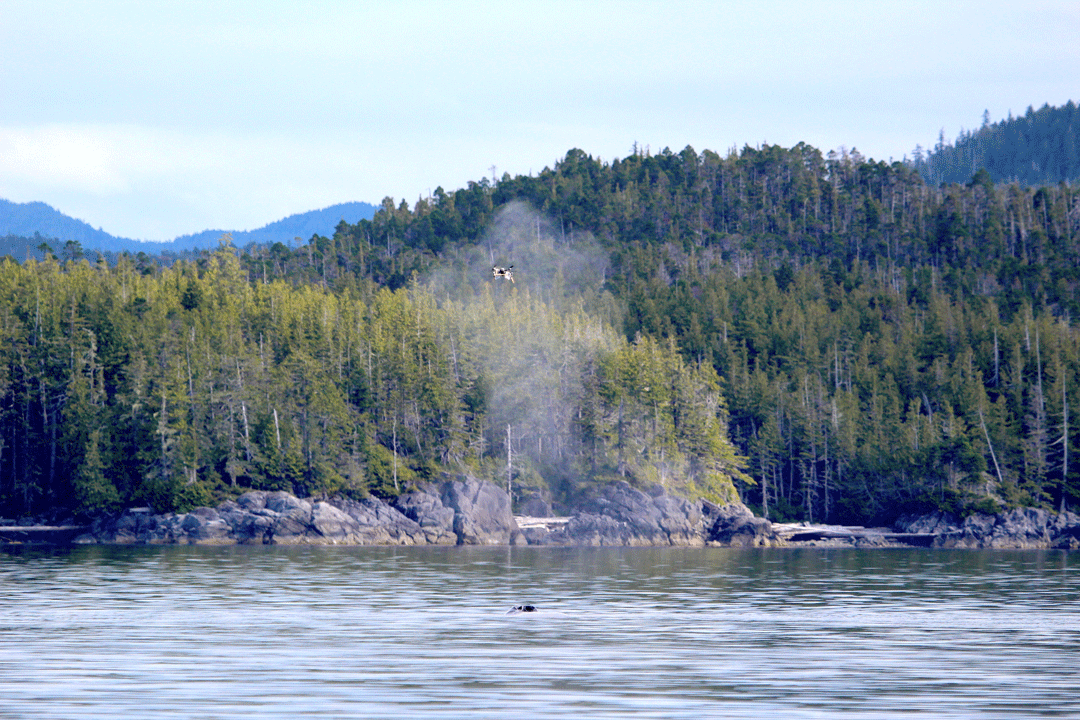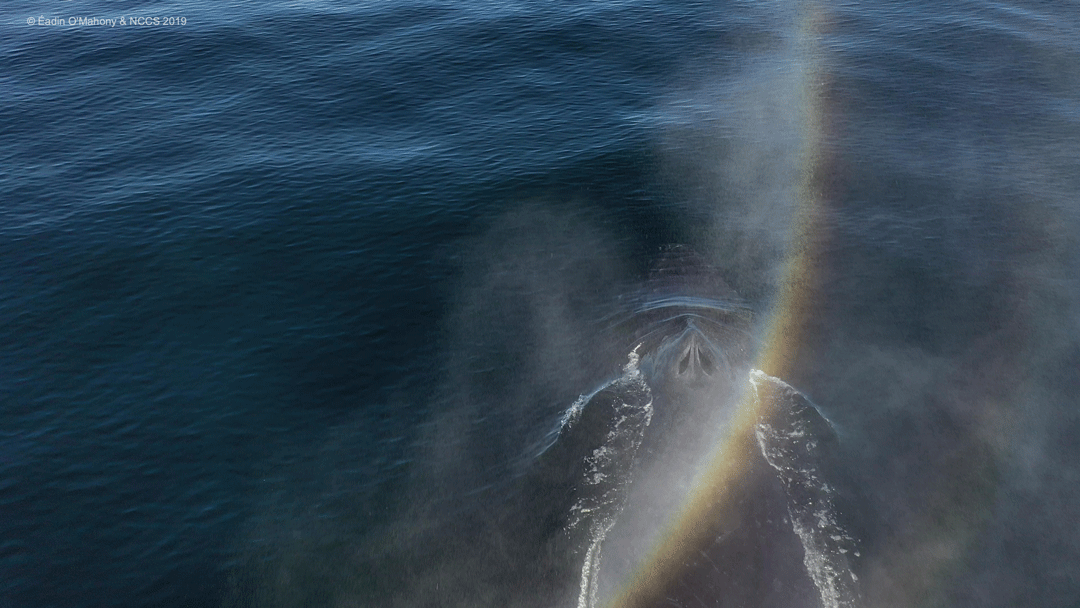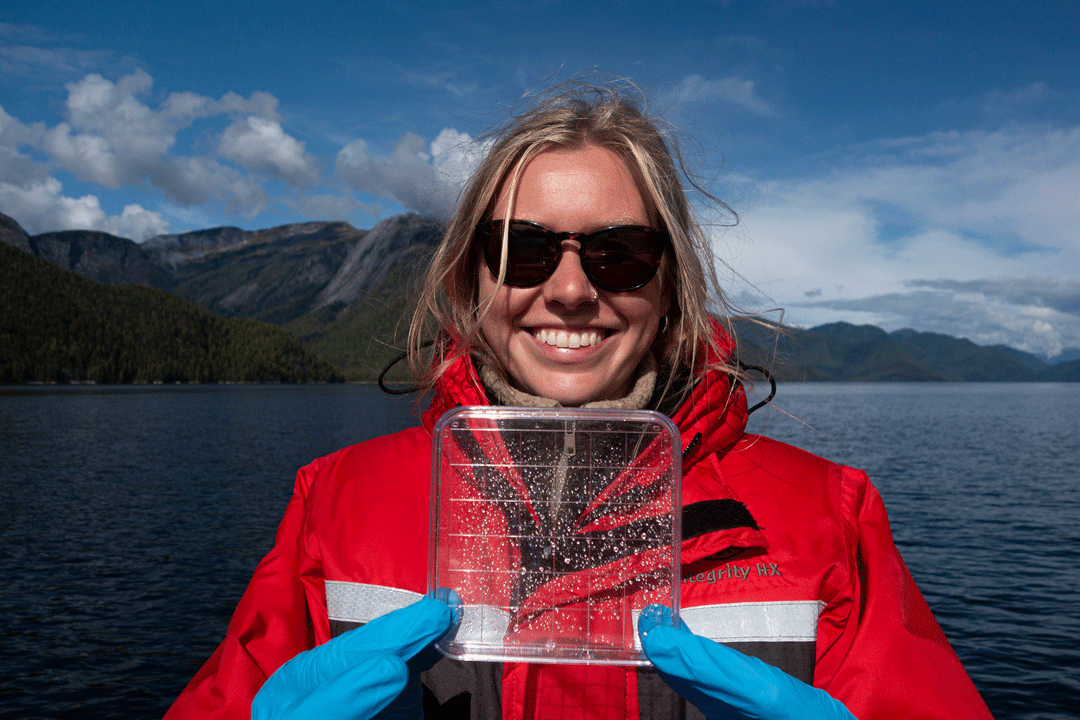Whale snot for conservation
As whale researchers, often we dream of having some form of x-ray vision superpower to be able to see fully the whales in their hidden world under the waves – and although we haven’t quite yet achieved superpowers (!) it is truly astounding how much more we can see by taking to the air with drones. Unveiling and piecing a new storyline together, we aim for results to provide a much deeper understanding of the genetic makeup of both humpbacks and fin whales, allowing more detailed monitoring of the whale populations’ recovery in these waters. This is especially important in preparation for assessing the impact of a recently approved liquefied natural gas (LNG) tanker route through the study region.
‘Exhaled breath condensate’, as it is known in marine mammal science, or simply ‘whale blow’, contains large enough amounts of genetic material to extract and sequence. This DNA will, for the first time ever, allow us to understand fully the relatedness patterns amongst the humpback whales utilizing the region of the Great Bear Rainforest of northern British Columbia, as well as understand migration patterns, without ever making direct contact with the whales themselves! This is a critical point, as the overarching goal of BC Whales is to protect cetaceans of coastal British Columbia, and so our research methods must be as non-invasive as possible, so as to minimize our direct impact, whilst maximising the research and conservation objectives we are working towards.

Photo by Nadège Fonvieille | © North Coast Cetacean Society
We carry this work out both from land and sea, launching the drone from the rocks at Fin Island Research Station, or from our research vessel, the Elemiah. Having launched the drone with a petri dish attached to it, we fly the drone through multiple exhales, collecting a fine mist of sticky, clear coloured whale blow within the dish. Crucial at this moment in time is for us to capture a photo of the humpback’s tail fluke as it rolls into view, or of a fin whale’s dorsal fin, as they prepare for a deep dive. The tail fluke for humpbacks and the dorsal fin for fin whales are what we can use to identify each individual. Thus we have a genetic sample from a known whale, often a whale we have been observing and welcoming back to the Gitga’at territory where we work each year for the past 15+ years!
Once we’ve collected enough blow and taken the ID photograph, we retrieve the drone by catching it out of the air, and then immediately seal the petri dish and place it on ice, preserving the precious DNA within it. Back at the research station, I process the samples to prepare them for transport after the season and freeze them in an off-grid solar-powered freezer.

Photo by Éadin O’Mahony | © North Coast Cetacean Society
The blow samples will become the foundation of my research Masters at the University of St Andrews in Scotland in early 2020, where I will extract valuable information from the strands of DNA in the labs there. Such non-invasively collected DNA will open the door for us to delve deeper and ask highly important ecological questions about these local whale populations, as the more we understand about them the better equipped we are to protect them in the long run.

Photo by Florent Nicolas | © North Coast Cetacean Society
As I lie in my tent each evening here at Fin Island, often listening to light rain spatter on the rain-fly, I am full-up with immense gratitude to BC Whales and the Gitga’at First Nation for taking me on board as a team member and allowing me to spearhead the drone work on behalf of the organization. I feel particularly lucky to have the opportunity to work in a place I sense a wonderful connection with, working amongst a team of dedicated and hardworking people, and all of this with a powerful drive to protect the wild and remote fjord lands of the Tsimshian Nation’s coastal waters. As our planet’s lands and oceans become increasingly threatened and polluted by the human presence, it is as crucial as ever to understand the ecological mechanisms at play, so that we can act firmly to protect what is still untouched. And for me, it is an honour to play even a small role in this big dream.
